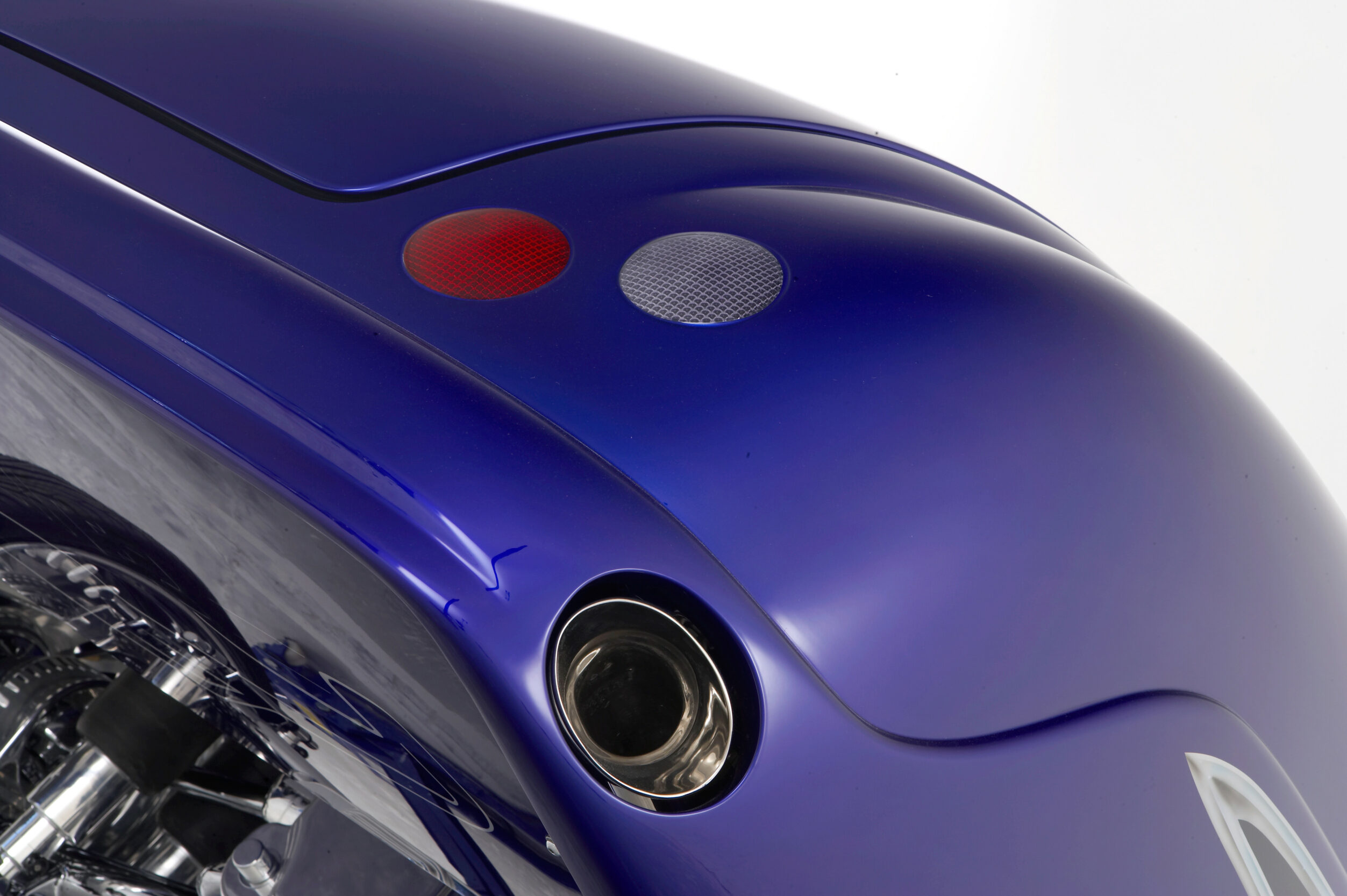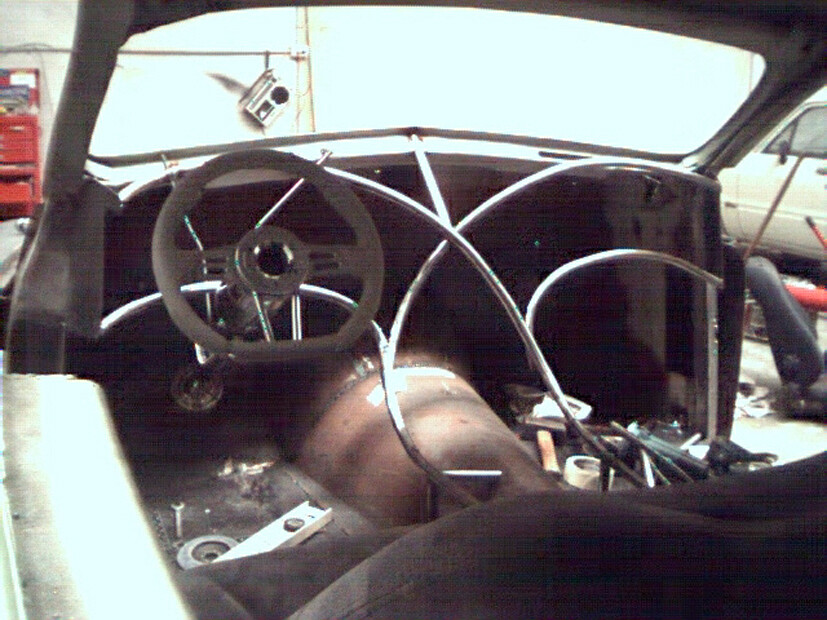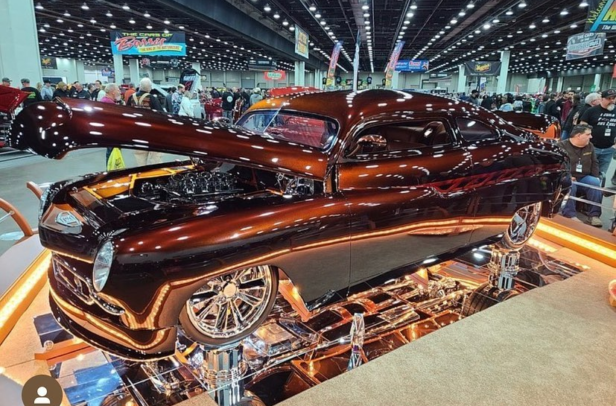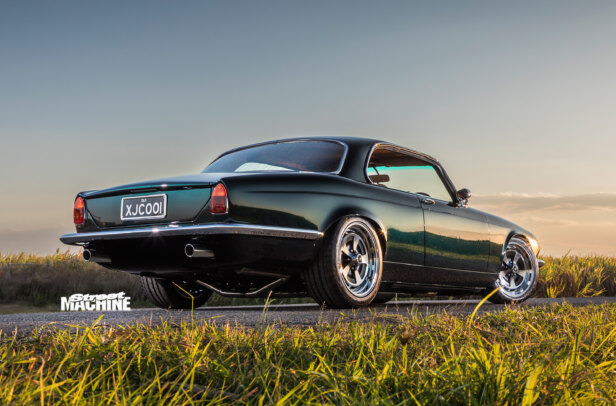Last month, we were sad to report on the currrent state of Mercules, languishing and up for auction in Turkiye. If you never had the chace to see the car in its prime – or read about in in SM, we’ve reproduced the full feature online for the first time below, with stunning photos by Peter Bateman.
This story was originally featured in the March 2006 issue of SM
When most Aussies hear the term Merc, they usually think of Mercedes-Benz. But when you’re talking custom cars, there’s only one Merc and that’s a ’49-’51 Mercury. Benny Gatt tried to confuse the issue at Summernats 19 by customising a 1958 Mercedes but we’ll get back to him later. He had a fairly big part in helping the owner of this car, Bruno Gianoncelli, get the car ready in time for Summernats but we’re getting way ahead of ourselves; three years to be precise.



That’s how long it took for Bruno and a bunch of West Aussie helpers (this car was built almost entirely in Perth) to get the car from “as bad as it gets” to “as good as I ever imagined”.
What Bruno started off with wasn’t exactly what you’d call pristine but that didn’t matter as there wasn’t going to be much left of the original car once he was done with the planned mods. Bruno reckons there are around 170 modifications to the body so we’re not going to get close to mentioning them all. We’ll give you a few pointers and you can figure out the rest by checking
out the pics.

It’s not surprising that the inspiration for this car came from a fateful viewing of that cinematic classic Cobra, starring Sylvester Stallone. Actually, if you ask most people, the real star was the gunmetal grey Mercury — it was definitely the better actor!
Sitting slammed on its Air Ride suspension, the car is so low you can’t get a pack of cigarettes under the sill
Bruno thought: “One day, that’s the kind of car I’d like to build.” So he did. “It was always going to be a show car, but it just grew into this,” he adds. What it grew into is one of the wildest customs ever to grace the floor at an Aussie show.

Debuting at Summernats 19 and being unveiled during the Great Meguiar’s Uncover was the perfect introduction for this stunning automobile. You could almost hear the jaws hit the ground as the covers came off and if I could have managed to get close enough at the time, I’m sure the looks on people’s faces would have been a sight to see. I just couldn’t get that close!
Sitting slammed on its Air Ride suspension, the car is so low you can’t get a pack of cigarettes under the sill. Adding to the slammed profile is a rather seriously chopped roof. Bruno’s not exactly sure how much they cut out of it: “We just kept chopping it until it looked right.”

With such a serious chop, you can end up with a windscreen that looks more like a mail-slot. To avoid this, the front pillars were chopped only slightly but pulled back seven inches to meet up with the roof. Smoothing it all out is V-butted and bevelled glass on the front and a custom-made rear screen sourced by H&L Glass.
Most chopped Mercurys use the original unchopped rear window but this can lead to a bit of a hump forming where the new roofline meets the window. On Mercules, the transition from roof to window and then to the boot is seamless and flows beautifully, just as the lines on a good custom should. Well, that’s one mod, only 169 to go!

At this point the car could have been built to any style, but Bruno was sure of how he wanted his Mercury to look. He’s a big fan of US car-building supremo Troy Trepanier and how he blends late-model underpinnings and styling cues with early-model bodies, and that’s what Bruno wanted to do.
One of the major styling points of the car is the use of E-Class Mercedes headlights. The quad-light set-up was masterfully worked into the bodywork by the talented John Gilbert, who did all of the metalwork in the Mercury — and there’s a lot of it.

Getting those Benz headlights to work with the real Merc sheet-metal was no mean feat. About the only original tin left in the whole front clip is the top portion of the fenders. The rest has been sliced and diced so the lights work stylistically, while the re-shaped bonnet, lowered wheel openings and completely fabricated grille-opening all blend into one flowing piece of bodywork.
The whole front clip comes off with just a handful of bolts. At the end of it all, the front end is now some four inches shorter.


To balance the cut-and-shut up front, Bruno thought he’d add a little more metal out back. It’s hard to pick as the factory body lines have been kept and worked into the design beautifully, but the rear has been extended 6½-inches. In place of a bumper that could be recycled to make four Hyundais, Bruno opted for the smooth look of a rolled pan, punctuated by a couple of
exhaust outlets.
With the major modifications performed on the rear of the car, the original boot lid just wasn’t going to work. Getting it right just about sent Bruno around the twist and almost made him give it away.

“If it wasn’t for Owen Webb convincing me to finish the car, I reckon I would’ve chucked it in,” Bruno tells us. It was a make or break time for the car.
Thanks to more metalwork mastery from John Gilbert, the problems were overcome and the project got back on track.
The list of modifications goes on: suicide doors, removed sills, fully welded seams, custom tail-lights, boxed and smoothed chassis, extended door skins, it just goes on. And that’s just the outside.

The inside is possibly more impressive. Except for the speaker housings, if it’s not covered in aluminium-coloured leather, it’s metal. That wild dashboard and console that wraps around the seats and then flows back to the front of the car across the top of the roof is all metal. Same with the door trims. All those curves and shapes that flow seamlessly from the doors to the dash; all metal and all done by John Gilbert.
For seating, a pair of modified Range Rover front seats — which come from the factory with nifty built-in seatbelts — and a modified SS Commodore bench in the back were trimmed up by Allied Upholstery in the metallic hide. The same stuff covers the doors, the floor and the panels in the roof.

If you spied that wild-looking shifter in the pics and were wondering where you could get one, don’t bother. That’s a one-off made by CNC whiz Tony Wardle. Bruno can’t speak highly enough of this man’s talents and how beautifully the whole mechanism works.
Tony’s work can also been seen in the billet hub-carriers for the Jag rear end — Bruno says you just can’t polish the factory units to a high enough standard as they’re too porous — as well as the simple and elegant grille. The fit around the bodywork is millimetre-perfect.
Traditionally, customs are built to look good and go slow, so it’s rare that you’ll see them with the bonnet up. It’s pretty obvious Bruno doesn’t give a rat’s about tradition. Under the smooth hood of Mercules nestles one hell of a donk. And it’s a Ford!

Ten cylinders of Henry’s finest, labelled the Triton V10 in the US, the 6.8-litre monster usually hauls around massive F-350s and other humungous products in the Ford catalogue.
You’d think that would be enough, but nope. Bruno figured a motor this big would be so much better with a blower. You won’t hear any complaints from us!

Built by Andrew Mueller in Brisbane, the alloy block and heads are basically stock, although the bottom-end has been bulletproofed and the heads have copped a bit of a port and polish. Above that is where it all starts to happen. An Autorotor 424 Special blower sits on top of a custom intake that has been tapped with hi-flow injectors. Making it all fire is an Autronic SM4 ECU that
has been programmed to fire the five hidden coil-packs.
It’s all polished to a mirror finish and to say it fills up the engine bay is a major understatement. Keeping it all under the bonnet was a must for Bruno. “Anyone can cut a hole in the bonnet and stick a blower through it, but to keep it all hidden is much harder.”

Choosing a colour can be one of the hardest decisions when building a car but for Bruno it was always going to be blue. Not just any blue though; a custom mix of House of Kolor pearls that sees an inky blue cover the majority of the body. Mixed up by Sean Booy at Impact Panel and Paint, it’s dark — not too dark — but when you get a bit of light on it, it almost glows. Accenting
this is a very dark navy blue which is separated by some airbrushed trim by Matt Egan. It’s a classy combination and works perfectly with the style of the car.


Wheels are another make or break feature on a car, so Bruno wanted something unique.
Thanks to Wheelboyz, the Bonspeed rims on Mercules are a one-off design. Measuring 18×7 up front and 20×8 out back, that’s some pretty modern sizing, but the styling leans towards a more classic look that is reminiscent of the full wheel-covers of years gone by. When he first spotted the wheels, Bruno thought: “No… they’re f#*!ing ugly!” But once they went on the car they suited
it perfectly. They might get changed though, just to give the car a different look.
Different look or not, there’s no doubting that this is one of the coolest, wildest and best cars ever to get built in Australia, Western Australia to be precise.

SUMMERNATS OR BUST!
Without the help of Benny Gatt and his mates Alan and Doug, Bruno reckons there’s no way he would have got the car to Summernats 19. Arriving only a week prior to the event, the car was nowhere near finished, but Bruno was adamant he was going to make it.
Not helping matters was the fact that the car got damaged in transit and the trim had to be re-done and wouldn’t arrive for a couple of days. The engine was missing its blower and induction system and to top it all off, the car was lowered off the jack onto a chock that normally holds the door open, causing some damage to the body.
It just so happened that Bruno’s painter, Sean Booy, was in Sydney for a family holiday.


Unfortunately for Sean, one phone call from Bruno put an end to those plans.
In the 48 hours leading up the Summernats, no-one slept. A risky business when you’re trying to put a car together to the highest standards imaginable. But they did it and did it well, taking out Top Judged Elite and a whole swag of other awards.
But next year Bruno promises to be bigger. With plenty of time to sort out the motor, Bruno will be gunning for the sword. To top it all off, he’s even planning to drive it back to Sydney. Now that will be something to see!

NEW DOGS, OLD TRICKS
When it comes to custom cars, the undisputed first choice of discerning customisers is a 1949-’51 Mercury. Why is it that this particular model became so popular?
During World War II (which for the Yanks was 1942-45) the automobile industry basically went into hibernation while all efforts went into making stuff that could attack the Japs and Germans.

Immediately following WWII, the 1946-48 designs were basically rehashed versions of the pre-war models.
It wasn’t until 1949 that truly new models were released but were they really that new? It wasn’t long before legendary customisers such as the Barris and Ayala Bros were getting hold of near-new Mercs and chopping them.

Although the designs were quite different from the previous year’s model, the two-piece windscreens and bodylines were quite familiar to the talented customisers and the same tricks that they had used on the pre-’49 models worked just as well on the new Mercurys.
In truth, it wasn’t until 1952 that the designs changed drastically and a whole new bag of tricks had to be learnt

1950 Mercury Coupe
Bruno Gianoncelli
| Colour: | House of Kolor custom blue pearl |
| ENGINE | |
| Brand: | Ford Triton V10, 6.8-litre |
| ECU: | Autronic SM4 |
| Heads: | Ported and polished |
| Camshaft: | Custom grind |
| Cooling: | Aluminium radiator by LF Performance |
| Exhaust: | Dual three-inch polished stainless |
| Ignition: | Hidden coil-pack |
| Power: | Estimated 7-800hp |
| TRANSMISSION | |
| Gearbox: | Ford 4R100 four-speed auto |
| Diff: | Jaguar, 3.7:1 ratio |
| SUSPENSION AND BRAKES | |
| Springs: | Air Ride (f&r) |
| Shocks: | Air Ride Shockwave (f&r) |
| Steering: | Flaming River stainless column |
| Brakes: | Custom made rotors (f&r) |
| Calipers: | Wilwood (f&r) |
| WHEELS & TYRES | |
| Tyres: | Falken 235/35×18 (f), Falken 265/35×20 (r) |
| Wheels: | Custom Bonspeeds, 18×7 (f), 20×8 (r) |
| INTERIOR | |
| Seats: | Modified Range Rover (f), modified SS Commodore (r) |
| Wheel: | Flaming River with Mercules centrepiece |
| Instruments: | Classic Instruments |
| Shifter: | Custom made by Tony Wardle |
| Stereo: | Pioneer, four TV screens, 16 speakers, seven amps, 3×10 subs by Audio Art |
THANKS
John Gilbert — Rod & Kustom Garage; Sean Booy — Impact Panel and Paint; Owen Webb — House of Kolor; Pioneer and Audio Art; H & L Glass; Benny Gatt, Alan and Doug for getting it to Summernats; Phil Pavicich for the trans sump; George Athan — Mirrorfinish




Comments